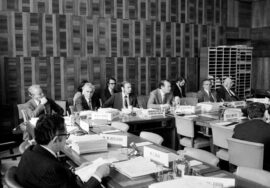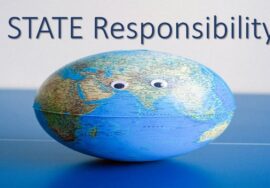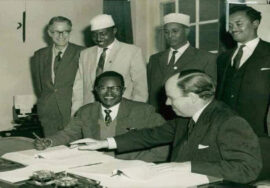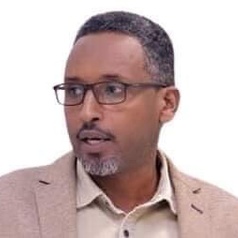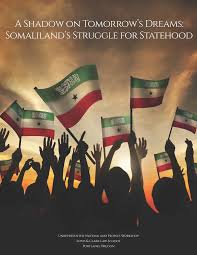
Somaliland’s Sustainability: Internal Obstacles and Geopolitical Pressures
Somaliland faces internal obstacles and geopolitical pressures in its pursuit of sustainability.
In 1991, Somaliland is not situated in the northern region of Somalia, whereas Puntland is located in the north of Somalia. Secondly, Somaliland’s action wasn’t a declaration of independence, but rather a withdrawal from an unlawful union, a reclaiming of its 1960 independence, followed by a failed unification attempt with another nation. Labeling Somaliland a regional administration wrongly portrays it as a secessionist entity. The name Somaliland dates back to at least the 2nd century BC when Arab seafarers referred to it as “Ardu-Somali”. The name of Somalia country is recent construted by Italian fascist coloniser Somalia. Somaliland’s politicians and inadequate international relations groundwork are to blame for its lack of international recognition.
Nation-Formation and the Declaration of Independence
Somaliland’s population has an identity unlike that of other Somalis. This identity resulted, specifically, from four important factors.
In the illegal 1960s union, Somalilanders witnessed Somalia’s politicians exhibiting a purely fascist mindset, a legacy of Italian colonialism, which sidelined Somaliland’s politics, culture, economy, and modern British education. The forced unification of the two countries was fraught with difficulties. Somalia and the other country had contrasting economies; Somalia was plagued by corruption, clannism (Hawiye & Darood), and a mafioso mentality, with differing judicial systems, languages of business and administration, and educational systems inherited from various European powers (the UK and Italy). Initial lack of planning, both legally and procedurally, doomed the unification from the start. A significant initial obstacle arose in December 1961, stemming from the manipulation of the June 1961 referendum by Somalia’s SYL political elite. A boycott was advocated for by most Somalilanders and the Somali National League politicians. Somali politicians, after 10 years of Italian training in political maneuvering, claimed a small village near Mogadishu recorded more “yes” votes than all of Somaliland, undermining Somaliland’s position. Sub-Saharan Africa saw its first attempted coup in December 1961 when Sandhurst-trained lieutenants from former British Somaliland revolted against their Italian-trained commanders in Mogadishu. The objective of this unsuccessful coup was the reinstatement of Somaliland’s independence from 26th June 1960.
The next 31 years of the illegal union saw Somaliland fall victim to a brain drain as Somalia concentrated its administrative and business power in Mogadishu. A gradual exodus of educated Somaliland cadres, business people, and politicians from Hargeisa to Somalia occurred. Policies that concentrated opportunities, resources, and education in the capital intentionally hampered Somaliland’s development, leaving the rest of the country underdeveloped. It was a stroke of genius to bring Somaliland to its knees. And yet, the UN’s actions from 2012 to 2025 prioritise Somalia’s development over Somaliland’s.
Economic Prospects
Somaliland’s nomadic population exceeds half its total population. The dependence of Somaliland on a single export and foreign market was underscored by its cattle exports, demanding diversification. Despite this, Somaliland’s economy offers some hope and reasons for optimism. First, among the nation’s greatest strengths is the entrepreneurial spirit of its people.
The International Environment: De Jure Recognition and Regional Geopolitics
After all, Somaliland and Eritrea have both been distinct colonial entities for approximately 80 years.
Compared to Eritrea, Somaliland’s recognition presents fewer difficulties. Somaliland, a distinct colonial entity, briefly existed as an independent nation for five days before uniting with its Italian neighbour to establish the Somali Republic on July 1, 1960. The internationally recognised sovereignty Somaliland briefly held serves as the primary legal basis for its right to recognition (UNDP 1999), and is used to counter claims that recognising Somaliland would inspire separatist movements elsewhere. Secondly, unlike Eritrea, Somaliland’s departure involved leaving an illegal union and a crumbling state. However, the latter point is also key to why Somaliland’s independence claim is less compelling than Eritrea’s. Somaliland was denied the agreed-upon and helpful farewell.
The future of Somaliland and Somalia is perilous, as Somalia’s collapse might not be permanent. Somalia could use force to reunite and restore its territorial integrity. The Horn of Africa faces an imminent large-scale war as both sides secretly build up their militaries.
The Mogadishu government maintained its territorial claim over Somaliland, but insisted it wouldn’t resort to force. But their claims of brotherhood are a complete smokescreen and entirely untrue. Somaliland’s vulnerability to a direct attack from Somalia is high once Somalia is ready. Both secretly arm themselves to the max and globally train their armies. Like Taiwan, Somaliland anticipates a potential attack. However, it’s unclear whether a Somaliland-Somalia conflict would involve traditional ground forces or modern drone and air power. For Somaliland to endure, superior military training, advanced technology, and a strategic advantage over Somalia’s larger population (especially the Hawiye and Darood) are crucial.
Theoretically, African states reject proposals to change the continent’s borders. Self-determination, per the OAU, is a one-time event, coinciding with decolonization from Europe. While Somaliland’s location within the ex-British Somaliland Protectorate may exempt it from the “inviolability” of colonial borders, OAU states (per Mohammed Egal, NBC 2001) are hesitant to initiate recognition. However, Somaliland’s neighbors and other regional powers have their own interests, which can either support or oppose their stated backing of the OAU principle.
Djibouti sees Somaliland as a threat to its security. There has always been tension between Djibouti and Somaliland. Despite Mohammed Egal’s assertion, Djibouti’s skepticism toward Somaliland’s de facto independence is evident, and it explicitly rejects any chance of de jure recognition.
Similar to Djibouti’s fight for independence, Eritrea also opposes Somaliland’s recognition and has actively worked to undermine its stability. For instance, Eritrea’s war with Ethiopia prompted an attempt to reignite Somaliland’s anti-independence movement to hinder Ethiopia’s use of Berbera port (Africa Confidential 1999a).
Is Somaliland’s recognition by Ethiopia likely? There’s no way to know for certain!
Conclusion
Somaliland’s nationhood arguably has roots far deeper than the instrumentalist school of nation-formation believes. Unlike the rest of Somalia, Somaliland has a distinct colonial past and less internal clan division. Furthermore, in contrast to many other African nations, conflict has been vital in shaping a robust national identity for most citizens. However, smooth state formation requires more than just a strong sense of identity. Three factors will determine Somaliland’s survival: economic strength, political stability, and favorable external conditions.
Many countries see Somaliland’s juridical sovereignty as a hazardous precedent, even though, unlike Eritrea, Somaliland doesn’t base its independence claim on changing colonial borders. In the short term, this international strategy is likely to continue.



